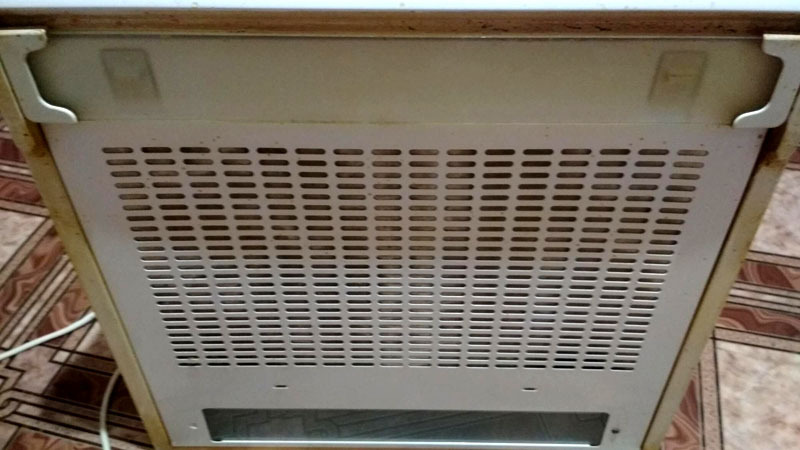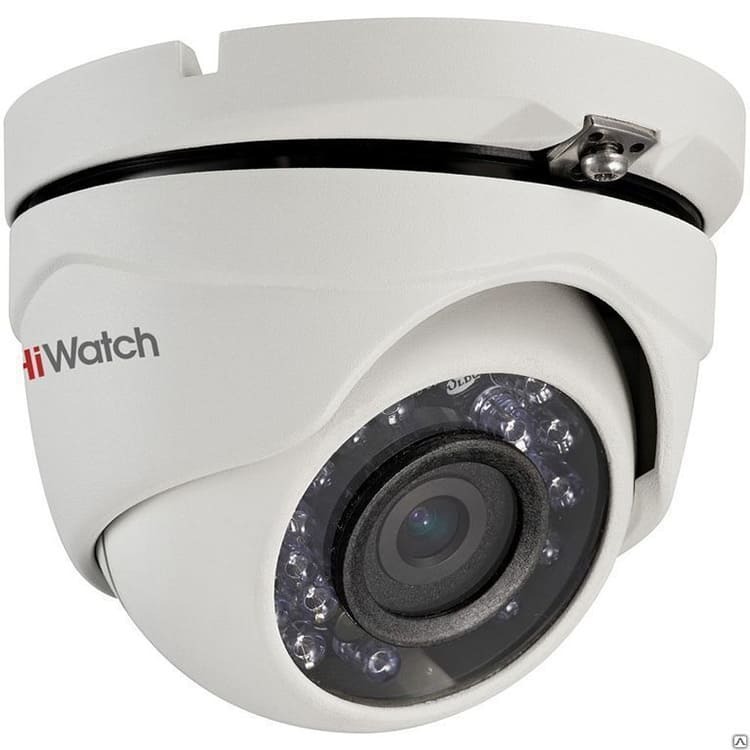Keeping your kitchen clean is tricky. When cooking, some fat is deposited on various surfaces. Helps to cope with the situation cooker hood. However, you need to know when it is time to clean the grill from the hood so that it can cope with the task at hand. We offer you to get acquainted with several ways, each of which will help to cope with the resulting pollution and at the same time does not require serious efforts and financial investments.
Read in the article
- 1 Frequency of cleaning
- 2 Disassembly procedure
- 3 Special remedy
- 4 Improvised means
- 4.1 Dishwashing liquid
- 4.2 Soda
- 4.3 Soap-soda solution
- 4.4 Ammonia
- 4.5 Vinegar
- 4.6 Lemon juice
- 4.7 Other means
- 5 Steam generator
Frequency of cleaning
It is advisable to clean the grill as soon as it gets dirty. With average activity, this should be done once a month. Those who prepare breakfast, lunch and dinner daily for a large family should do this at least once every two weeks. For those who drink only tea at home and prepare light salads, cleaning can be carried out no more often than after 2-3 months.

Attention! By observing the recommended frequency, the applied effort can be minimized.

If cleaning is performed less frequently, you may encounter the following problems:
- decrease in the efficiency of the device. The grates will no longer trap grease and dirt. As a result, the air in the kitchen will become much worse cleaned;
- an increase in the level of generated noise;
- deterioration in appearance. Contamination is formed not only on the grates, but also on the body of the device, which significantly affects the appearance of the hood as a whole;
- breakdown of the exhaust system.
Advice! In order for the hood to work as long as possible, the device should be disassembled every 1.5-2 years in order to lubricate the motor.

Disassembly procedure
To clean the hood efficiently, it must be disassembled. The procedure for disassembling a particular model is detailed in the instructions for its operation. Here you can find which elements are removable and which nodes cannot be disassembled.
In the absence of instructions, you can proceed in the following sequence:
- disconnect the device from the mains;
- snap off the clips holding the top panel, if any;
- remove the grease filter;
- remove the tube connected to the vent;
- remove the rest of the removable parts. To speed up the cleaning process and improve its quality, the element can be soaked for some time in the prepared solution;
- get out air filter.
Attention! Fixed and non-dismountable elements are cleaned when assembled. During cleaning, moisture must not enter the interior of the device.

Special remedy
Specialized enterprises have developed a whole range of household chemicals to cope with the largest fat deposits. Similar compositions are used for oven cleaning, Microwave ovens and hoods. Presented in the form of a spray, gel, liquid.
The following products are widely used:
- Effective gel "1 minute" copes with fatty deposits.
- "Bugs". The Shumanit tool will help clean both the oven and the hood.
- Cilit Bang. Offers a wide range of products. The AntiFat + Shine spray has proven itself well.
Attention! The substances included in the special means can cause serious harm to health. When using them, protect the respiratory tract and work only with rubber gloves.

The grate cleaning process is as follows:
- The elements are placed in a previously prepared container.
- The selected product is evenly applied to the surface. The spray is sprayed. The gel or liquid is spread with a sponge.
- Leave the composition on the surface to be cleaned for the time specified in the instructions.
- The remains of softened fat deposits are removed with a brush or sponge.
- The grates are thoroughly washed under a stream of water, completely removing the remaining dirt.
Special formulations allow you to cope with the toughest dirt. However, they are quite expensive and not suitable for people with respiratory problems. In addition, most preparations cannot be applied to an aluminum grid.

Related article:
How to clean the microwave. How to clean the microwave with home remedies, how to clean with lemon, how to clean with vinegar and soda, folk tricks on how to clean the microwave with orange peels, cleaning the microwave with a grill function, care tips - read in publications.
Improvised means
If you could not purchase a special cleaner for the hood, you can use the tools at hand. They will help you to effectively cope with the task at hand. You just need to figure out the order of its use.

Dishwashing liquid
A suitable option for relatively recent dirt that has not yet entered the holes, has not hardened or become sticky. To use this method, you need to prepare a container, the volume of which allows you to completely place the parts to be cleaned in it.
Then the order of work is as follows:
- The grates are placed in a container.
- A prepared agent is applied to the contaminated surface.
- A sufficient amount of hot water is poured, ensuring that the elements to be cleaned are completely immersed in the liquid.
- Everything is left for at least half an hour. There should be enough time for the fat deposits to soak. It is undesirable to leave aluminum filters in water for a long time.
- The grates are removed, and then the softened fat is removed with a metal sponge or brush.
- Residual dirt is washed off with water.
- The surface is dried before installation.
If after the procedure there is still dirt on the surface, the procedure can be repeated. Dishwashing detergent keeps the device clean, eliminating the need for harsh detergents.

Related article:
How to clean the oven from grease and carbon deposits at home: safety measures and what household chemicals are best to use, folk methods, cleaning the surface of the stove with salt, soda, advice and recommendations from our editorial staff.
Soda
The tool allows you to cope with light to medium dirt. Soda ash is preferred over baking soda.
Cleaning is performed in the following sequence:
- A container of sufficient volume is filled with water and put on fire.
- Soda is gradually added to the liquid. The solution is stirred until the substance is completely dissolved.
- The grates are immersed in a boiling solution, leaving for half an hour.
- Fat deposits are removed from the surface with a brush.
- The filters are washed under running water.
Advice! In the absence of a container of sufficient volume, you can first boil one side of the wire shelf, and then ̶ the other.
Soda should not be used to clean aluminum grates. After contact with baking soda, the surface may become dull. But she can clean the steel surface quickly and efficiently.

Soap-soda solution
This combination improves the effectiveness of the soap solution and makes the effect of soda less aggressive.
Cleaning is performed in the following sequence:
- Fill a 10 liter container with hot water.
- Add a quarter glass of baking soda and a tablespoon of detergent. The liquid is stirred to dissolve the added substances.
- Grids are lowered into the prepared solution and left for 10-15 minutes. If fatty contamination has appeared for a long time, the solution should be brought to a boil, and then the items to be cleaned should be placed in it for 1.5-2 hours.
- The surface is cleaned with a brush and rinsed well under running water.
You can also use 72% laundry soap. The solution is prepared by mixing 100 g of soap with 5 tbsp. spoons of soda. The grates are boiled in solution for 10-15 minutes. With heavy dirt, the processing time is increased to half an hour.

Ammonia
Ammonia fights well against newly formed fatty contamination. To clean the surface, 100 ml of the product is dissolved in 3.5 liters of water heated to a temperature of +50 ° C. The grates are placed in the solution and left for 2-4 hours. After that, the dirt is removed with a brush and washed under water.
Attention! Given the toxicity of ammonia, cleaning should be done in a well-ventilated area.

Vinegar
The surface is cleaned with a 9% vinegar solution in a well-ventilated area. To remove dirt, a rag or sponge is dipped in vinegar, and then thoroughly wipe the contaminated area. If fatty deposits have appeared long enough, the filter is placed on a baking sheet, and then poured with vinegar for 10-15 minutes. The surface is cleaned with a brush and then thoroughly rinsed under running water.
Despite the obvious corrosiveness of acetic acid, a 9% solution is unable to deal with serious contamination. In this case, wipe the fatty deposits with food grade acetic acid. With an average degree of contamination, acetic acid is diluted with water in a ratio of 1 to 1.

Lemon juice
To prepare the juice, you need 1-2 lemon fruits, which are freed from the peel, cut in half, and then they begin to rub the resulting dirt with them. Instead of lemon, you can use citric acid, which in the amount of 3 tbsp. spoons are diluted in a liter of water.
The surfaces treated with the composition are left for at least 20 minutes. If the contamination has formed long enough, the filter is left in the solution overnight. The grease deposits can then be easily removed and the wire racks ̶ can be rinsed and wiped dry.

Other means
In addition to the listed funds, you can also use:
- Coca-Cola or Pepsi carbonated drinks, which are poured over the racks and left for a while.
- "Whiteness". For cleaning, the gratings are soaked in water, and then the composition is gently applied to the surface with a brush. The filter is then cleaned and washed.
- Pipe cleaner. It is applied to the surface and left.

Steam generator
Device forms a steam jet heated to a temperature of +150 ° C. This temperature is sufficient to melt the fat deposits on the surface. In the process of such processing, the elements are not only cleaned, but also disinfected. After treating the device with steam, you will need to send the filters under a stream of warm water, and then gently rinse them with detergent.
Share in the comments how and how often you clean the grates in the hood.





